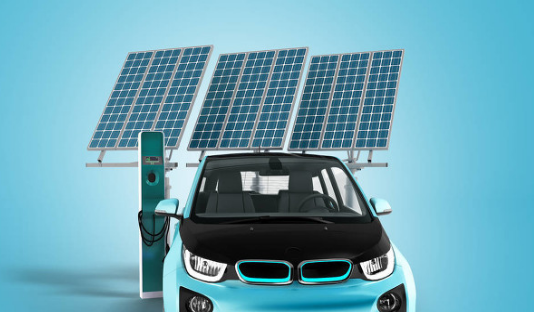What is the role of wireless charging technology for electric vehicles?
In 2007, MIT professor Marin Soljačić team wrote a paper and demonstrated the electromagnetic resonance wireless charging technology, using two 5-turn copper coils as two ends, lighting a 60W power bulb at a distance of two meters, with an efficiency of about 45%. The research team then used the name of the project to establish a private company, WiTricity, and applied for related patents using this technology.
Compared with the electromagnetic induction type, the characteristics of the electromagnetic resonance type are obviously more in line with the needs of wireless charging of electric vehicles. So shortly after the announcement of the technology demonstration, WiTricity received olive branches from Audi, BMW, Chrysler, Jaguar, Nissan and Toyota, and all expressed their willingness to cooperate with them. However, after receiving financial support, the development of wireless charging technology for electric vehicles is not as good as expected. There are very few models that really land, such as the 530e iPerformance exhibited by BMW in 2018, which can wirelessly transmit power with 3.2kW of power.
During this period, Qualcomm, which competed with it, once acquired Halo Wireless Charging Company, and also vigorously developed electromagnetic resonance wireless charging technology. It also announced that it will install wireless charging technology on Mercedes-Benz S550e models in 2018. However, after years of development, Qualcomm may think that the consumer electronics market is more important, so in 2019 it will sell the wireless charging department of the electric vehicle and all technical patents to WiTricity.
Since then, WiTricity has won a large number of patents for wireless charging of electric vehicles, and with this advantage, it has begun to promote the formulation of relevant standards in various regions. In fact, there are many companies that focus on wireless charging technology for electric vehicles, but eventually either reduced to the experimental stage, or after market investigation and research, found that this technology does not seem to have a prospect, and finally gave up, and turned to wireless charging in the field of consumer electronics technology. Most of the major car companies that entered the market early have finally retained a tepid attitude.
Wireless charging, on the surface, seems to only solve the "lazy" problem, eliminating the process of picking up the charging gun and inserting it into the charging port; but in fact, the problem solved by wireless charging does not stop at this time. Charging specifications and interfaces can be adjusted through wireless charging Completely unified, it saves space compared to wired charging layout, can solve many safety problems of charging piles, and can provide completely unmanned operation for autonomous driving travel services.
Of course, from the power point of view, wireless charging, the sample product is up to 22kW, which is indeed much slower than the over 100kW overcharged; but this
does not hinder the practical convenience in many scenarios, such as when the vehicle is placed in the parking lot and When returning home to park in the garage, the non-inductive effect of wireless charging can really allow the vehicle to be charged "all the time", without worrying about the "recharge" problem.

But then again, so many "pioneers" eventually gave up one by one. They are not unaware of these advantages, but it is not so easy to achieve all this relatively well. In addition to no advantage in charging speed, the safety problem of wireless charging of electric vehicles has always been one of the important reasons that hindered market acceptance. Although the wavelength of the 6.78MHz frequency band used by the electromagnetic resonance technology is about 30 meters from the perspective of scientific demonstration, it is harmless to the human body, but the demonstration of these problems requires a lot of experiments and time to prove.
Not only that, the previous lack of standard setting has made the entire industry unable to achieve scale, and the cost of hardware equipment is much more expensive than wired charging. In this way, it is not cost-effective for individual users or the construction of public facilities. Difficult to advance. In fact, even now China has formulated relevant standards, it will take a long time to gradually improve the entire industry, thereby gradually reducing costs, and then truly accepted by the market.
In other words, for the wireless charging technology of electric vehicles, the current situation is very similar to the stage where Tesla has just started. The immaturity of related industries must mean that it is difficult at the initial stage. Coincidentally, wireless charging technology is very similar to the "bumpy" experience of electric vehicles. They are all things with a hundred years of history, not new technologies. However, due to various environmental factors, it has been delayed to achieve real development; but once these technologies are assisted, they will quickly release energy and show extremely strong development potential.
If you want to know more, our website has product specifications for wireless charging technology, you can go to ALLICDATA ELECTRONICS LIMITED to get more information

